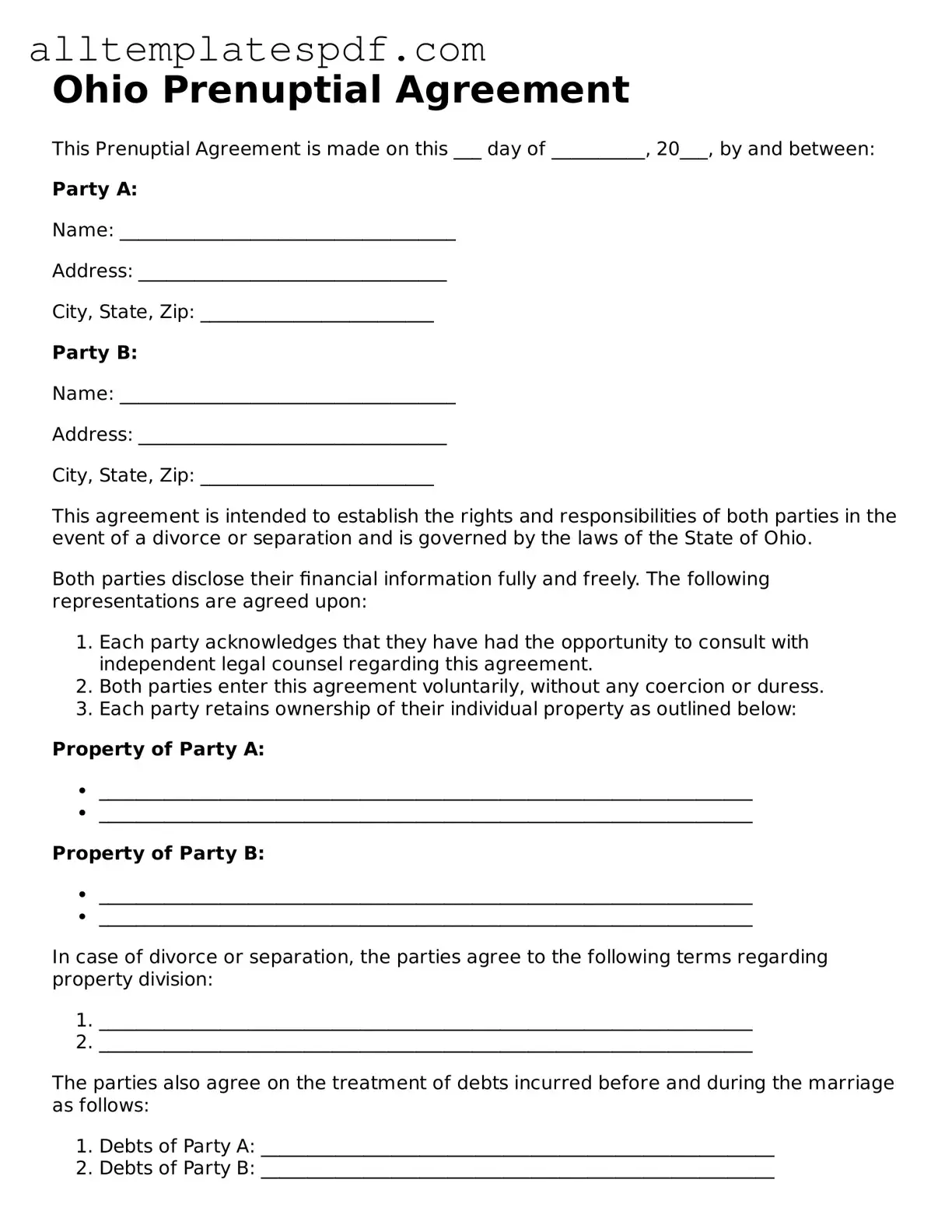Filling out a prenuptial agreement form in Ohio can be a straightforward process, but many people make common mistakes that can lead to complications later on. One frequent error is failing to fully disclose assets. It’s crucial to list all properties, bank accounts, and investments. Not doing so can lead to disputes and may even invalidate the agreement.
Another mistake is using vague language. Clear and specific terms are essential in a prenuptial agreement. Ambiguity can create confusion and lead to misinterpretations in the future. Always define terms and conditions clearly to avoid potential conflicts.
People often overlook the importance of having both parties review the agreement independently. Each partner should consult their own legal counsel. This ensures that both individuals understand their rights and obligations. Skipping this step can result in one party feeling pressured or uninformed.
Inadequate consideration is another common pitfall. For a prenuptial agreement to be enforceable, there needs to be a fair exchange. If one party gives up rights without receiving something of value in return, the agreement may be challenged in court.
Many couples forget to update their prenuptial agreement after significant life changes. Events such as having children, acquiring new assets, or changes in financial status can all warrant a review and potential revision of the agreement.
Some individuals assume that a notary public is enough for the agreement to be valid. While notarization is important, both parties must also sign the document voluntarily. Coercion or undue pressure can render the agreement unenforceable.
Failing to include a sunset clause can also be a mistake. A sunset clause sets a timeline for how long the agreement remains in effect. Without it, the agreement could last indefinitely, which may not be desirable for either party.
Another issue arises when couples do not consider the laws of their state. Ohio has specific requirements for prenuptial agreements. Ignoring these can lead to enforceability issues. It’s wise to familiarize oneself with local laws to ensure compliance.
Lastly, many people underestimate the emotional aspect of creating a prenuptial agreement. It’s important to approach the discussion with care and sensitivity. Open communication can help both partners feel respected and valued, paving the way for a strong foundation in the marriage.
